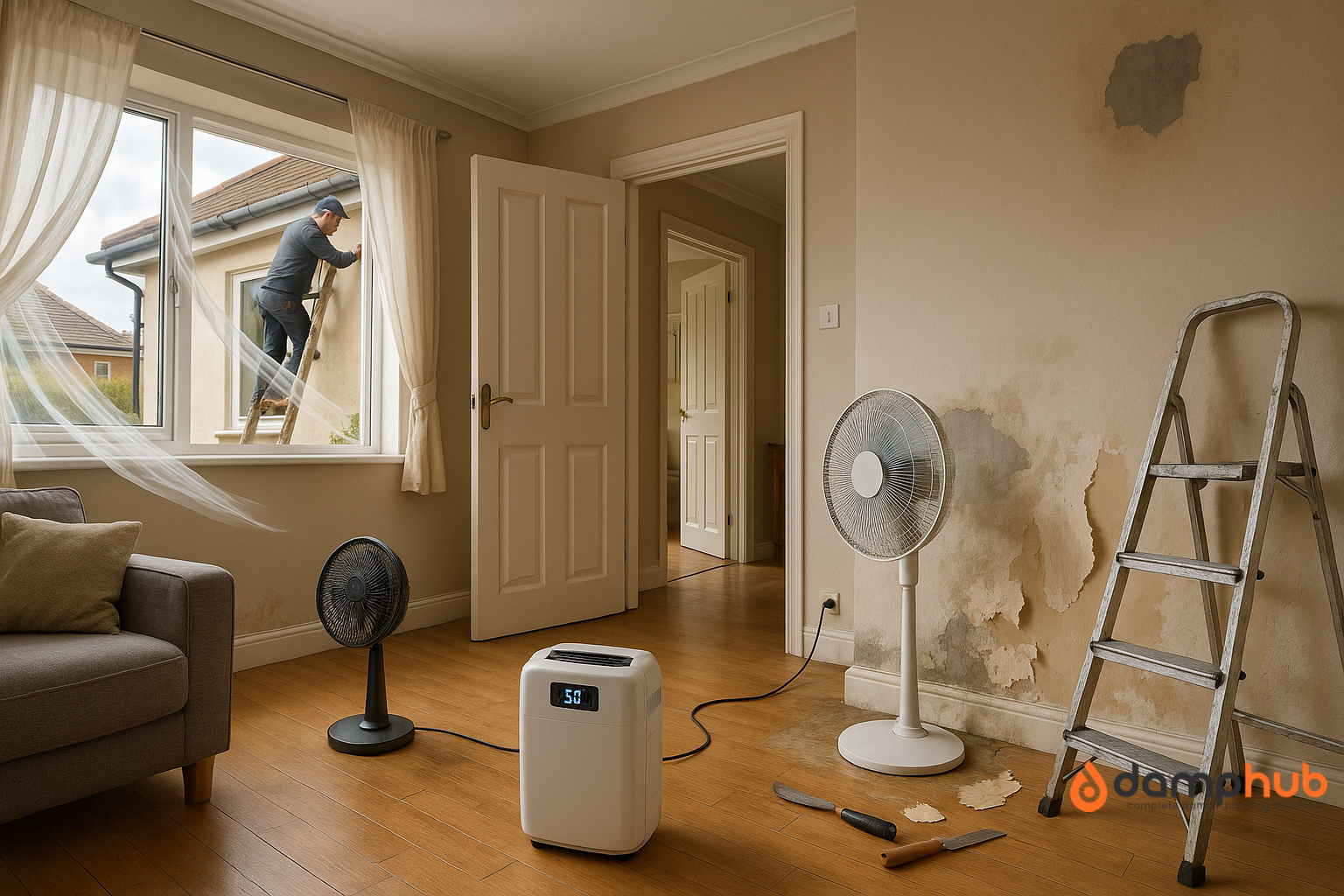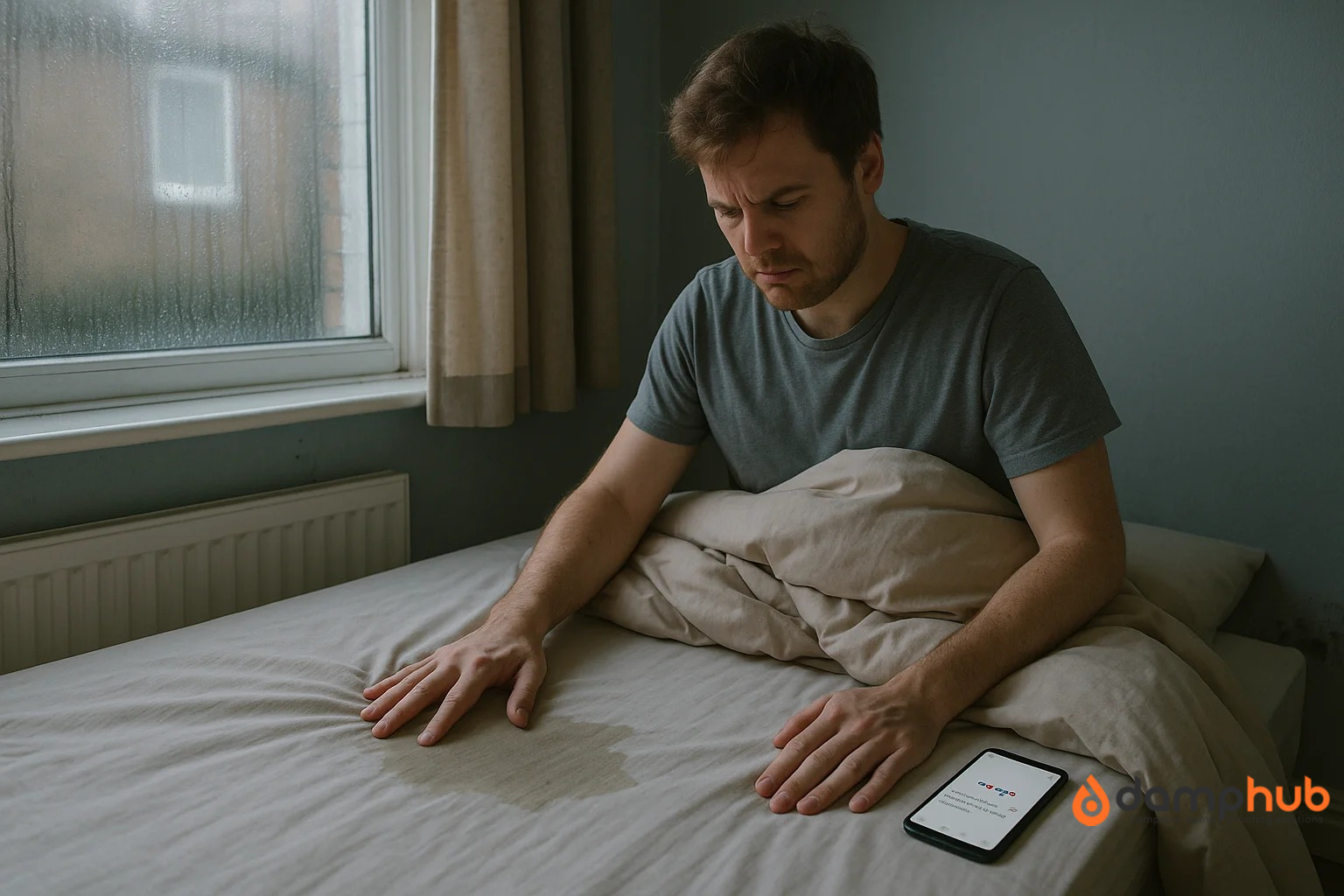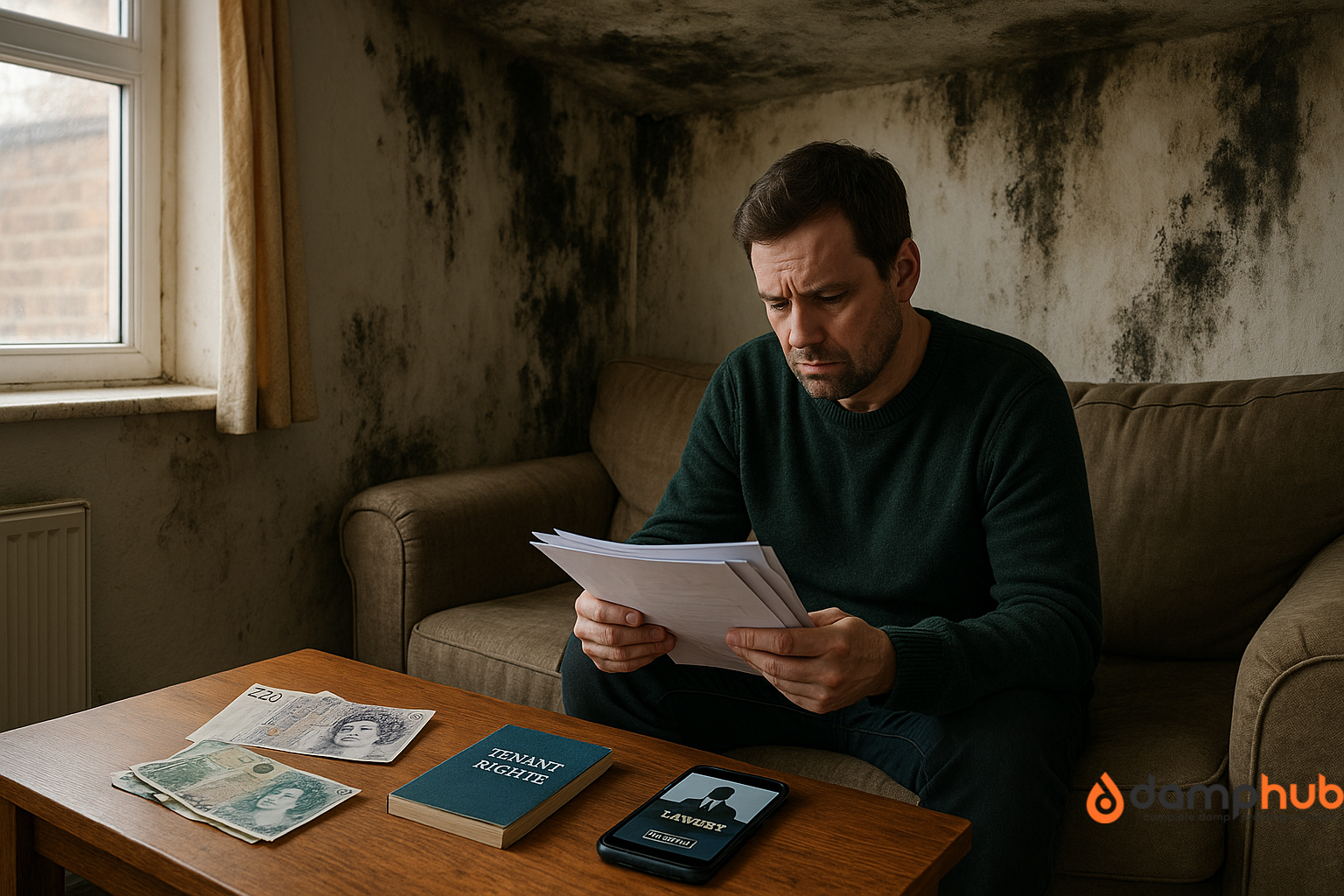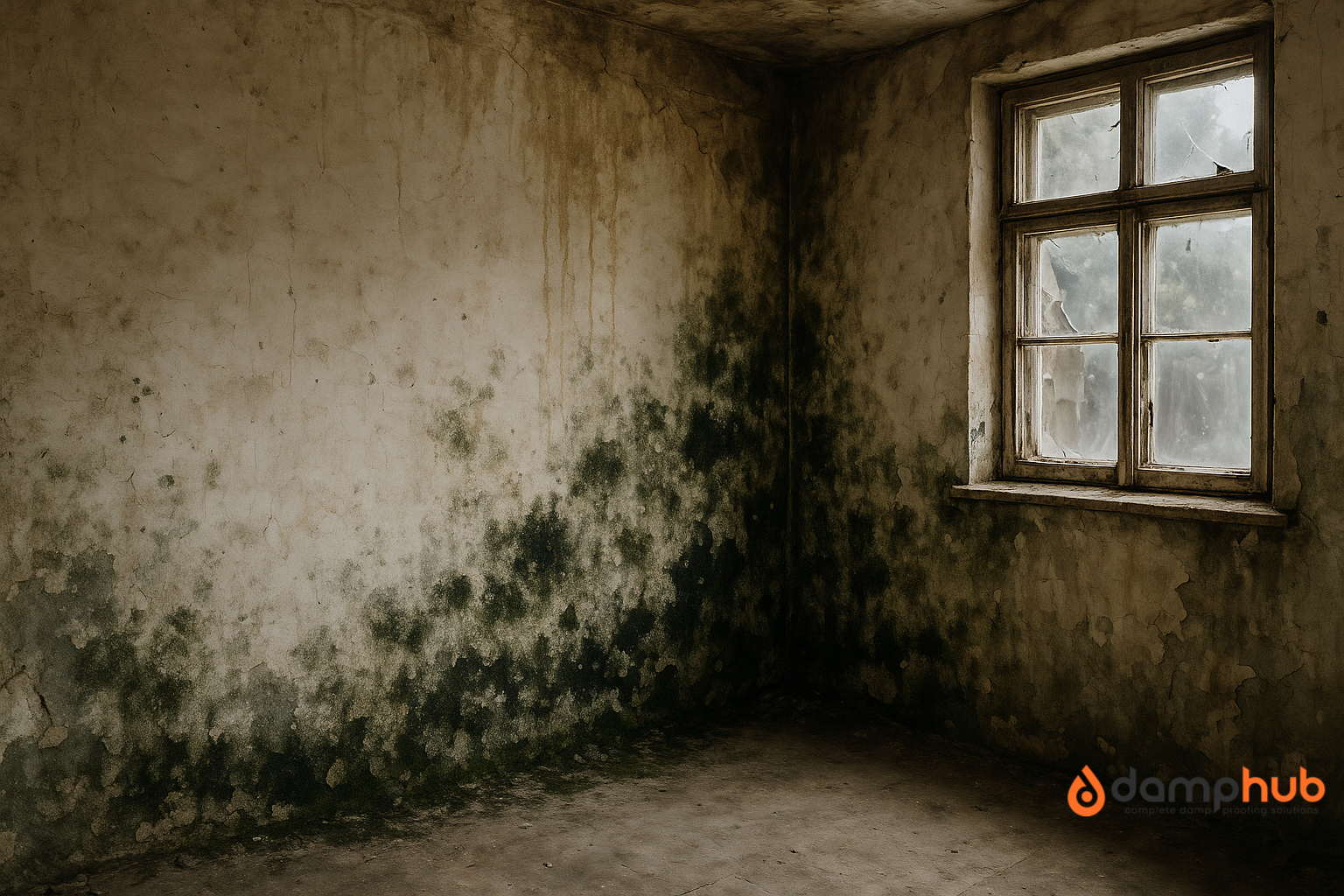
Many people find their homes damp, but dampness is a mysterious subject.
Knowing what is damp, how it affects your home, and how to get rid of it will make your living situation more pleasant and healthier.
In the following pages, we’ll cover all you need to learn about dampness.
What is Dampness?
Overall, dampness is the presence of unwanted and unhealthy moisture within a building’s walls or premises. Now, let’s look at the types of dampness as we explore each in detail:
Rising Damp
Rising damp occurs when groundwater moves through the walls due to capillary action.
It’s a slow process, but over time, it can cause significant damage to plaster, paint, and even structural integrity.
The key to combating rising damp is to install a practical damp-proof course and ensure proper drainage around the building’s foundation.
👉 Must read: Is Rising Damp Dangerous?

Penetrating Damp
Penetrating damp enters the building from the outside through structural defects, such as cracks or open wall spaces.
The problem is usually associated with a lack of maintenance and exterior wall damage. As a rule, repairs are concerned with eliminating defects and improving the resistant waterproof surface.
The third type is called condensation, often noticed over penetrating and rising damp. It appears due to the vapour inside and around the surfaces where moisture accumulates.
The area with Poor ventilation may require unique algae to blow air inside.
What are the Causes of Dampness??
Dampness in buildings is a multifaceted problem, and various external and internal sources contribute to its occurrence. Here’s a detailed examination of these causes:
External Sources of Dampness
Moisture from the ground: In most cases, dampness is caused by the soil underneath, which is exceptionally porous and contains a large amount of moisture.
This moisture seeps into the groundwater and is transported up the walls and flooring of the building.
Rainwater Passes Through the Wall: When the roof covering is damaged or the surface walls, terraces, and roofs hold a crack, rainwater spills on the building.
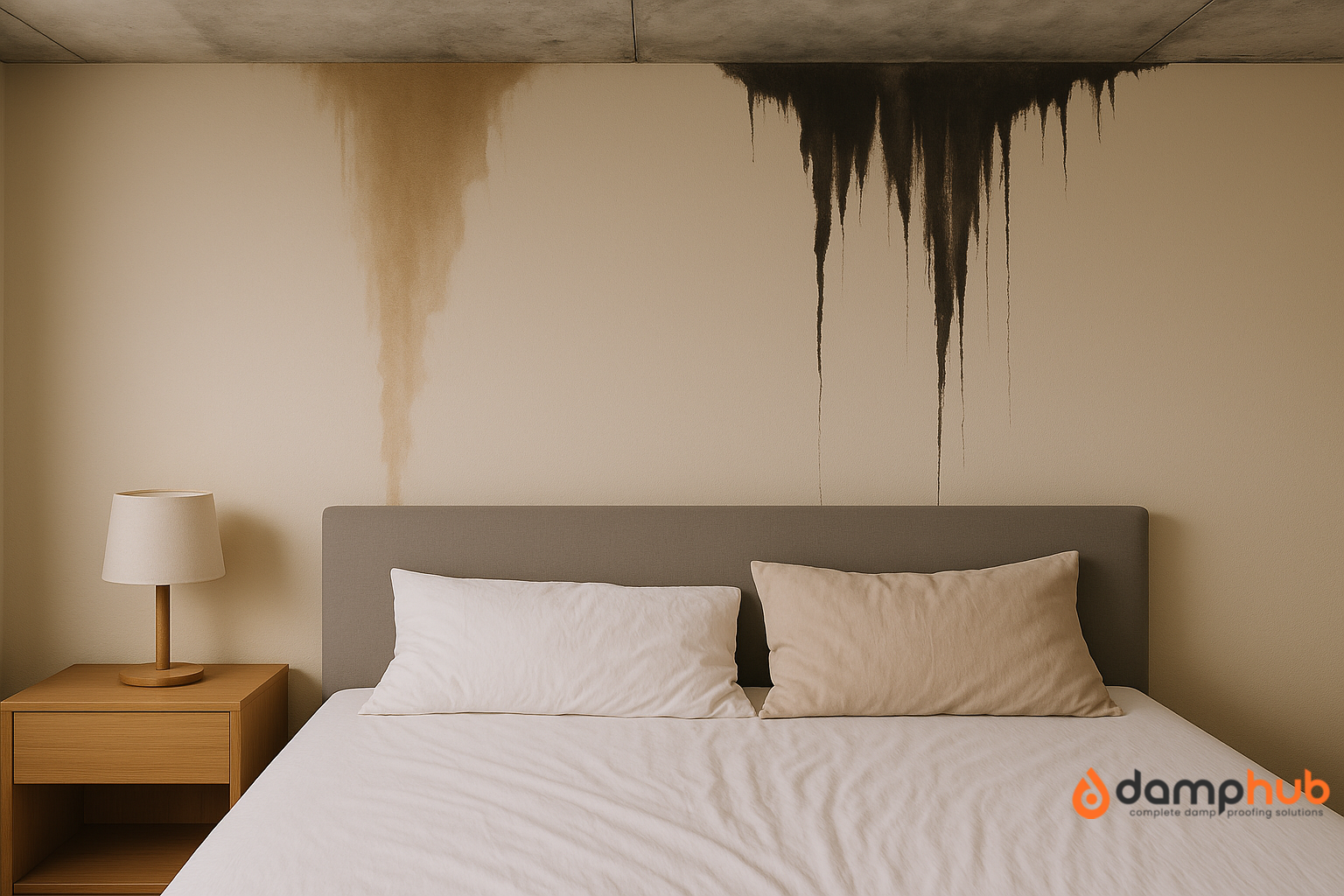
If the top portion of the wall is not protected, when it rains, rainwater enters and travels down, making the structure wet.
Rain Beating Against Walls: In high rainfall areas, water can strike the external walls. The walls may not have been treated well or designed for use, resulting in wetness entering them and dampening them.
Defective Plumbing: When the plumbing systems leak, dampness rises through the walls or flooring, contributing to the dampness of the building.
👉 Related Blog: Paint for Damp Walls in the UK | Damp Paints for Interior Walls
Poor Drainage: Poor drainage may lead to a lot of water collection at the building’s base, and high water may force its way into the walls of the structure.
Internal Sources of Dampness
Condensation: This is the most frequent internal cause of dampness. Activities that exude moisture, such as cooking, bathing, and drying clothes inside, elevate the humidity level in the air.
The moist air condenses into water droplets when it touches colder areas.
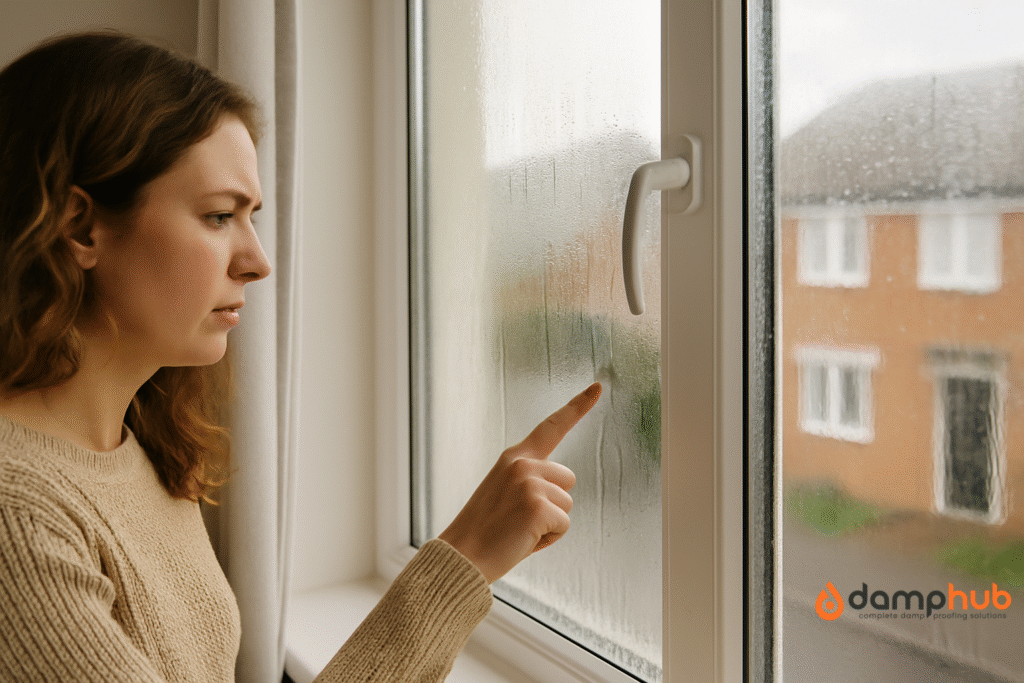
Moisture entrapment during construction: On occasion, moisture can get captured in the building while it is being built due to poor drying of construction resources or when construction is done when it is moist.
Condensation: This is the most frequent internal cause of dampness.
Activities that exude moisture, such as cooking, bathing, and drying clothes inside, elevate the humidity level in the air. The moist air condenses into water droplets when it touches colder areas.
What Are the Signs And Symptoms of Dampness
Identifying dampness in homes at an early stage is crucial to preventing structural damage and health issues. Here are the key signs and symptoms.
Visual Signs:
- Mould Growth: Black, green, or white spores, often found in corners, on walls, or near windows.
- Water Stains: Discolouration on ceilings, walls, or floors.
- Condensation: On windows or metal surfaces.
- Peeling Wallpaper: Or blistering paint.
- Salt Deposits: White, powdery substance on walls (efflorescence).
Health Symptoms:
- Respiratory Problems: Increased asthma attacks, coughing, or difficulty breathing.
- Allergic Reactions: Sneezing, itchy eyes, or skin rashes.
Early detection can save costly repairs and protect your health. If you notice these signs, consider consulting a professional for assessment and remediation.
What Are the Health Impacts of Dampness
Dampness in homes can lead to mould and mildew, which are harmful to health. They release spores and toxins that can cause:
Respiratory Issues:
- Asthma: Worsening of symptoms or new onset.
- Infections: Increased risk, especially in those with weakened immune systems.
Allergic Reactions:
- Immediate: Sneezing, runny nose, or itchy eyes.
- Long-term: Chronic respiratory conditions.
When to Seek Medical Consultation:
- Persistent Symptoms: If respiratory or allergic symptoms persist, worsen, or are unusual for you.
- Health Changes: Especially after detecting mould in your home.
It’s essential to address dampness promptly and consult healthcare providers if health concerns arise.
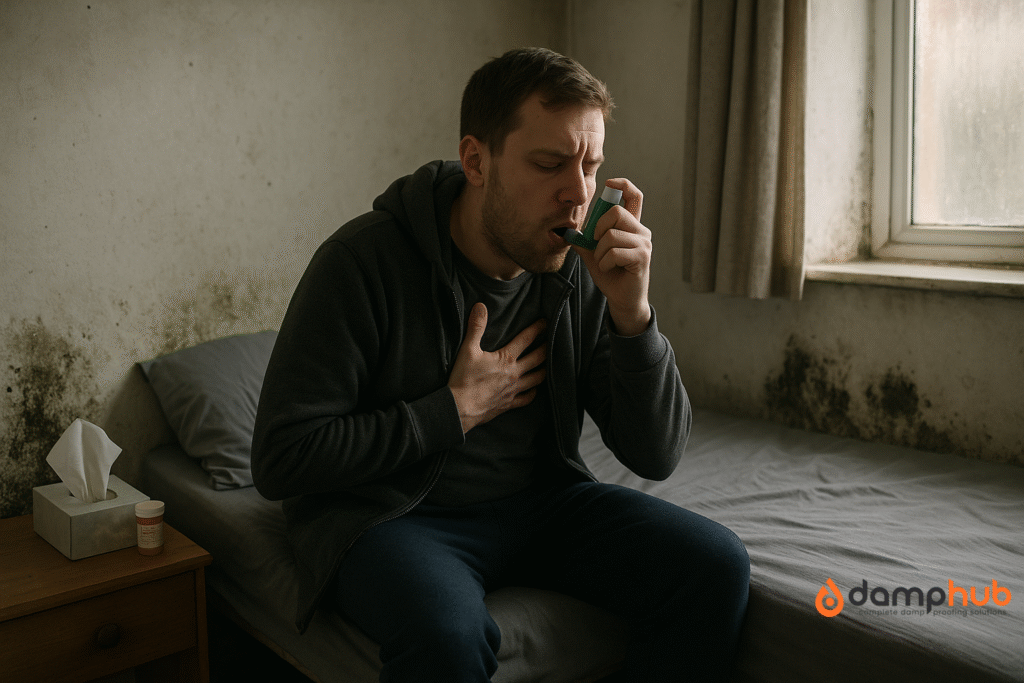
How Do I Prevent Dampness in My Home
To prevent dampness in homes, consider these tips:
Proper Ventilation:
- Air Circulation: Ensure regular airflow by opening windows or using exhaust fans, especially in kitchens and bathrooms.
- Dehumidifiers: Use in damp-prone areas to reduce moisture levels.
Heating:
- Consistent Temperature: Maintain a warm, consistent indoor temperature to avoid condensation.
Moisture Control:
- Fix Leaks: Promptly repair any plumbing leaks.
- Dry Clothes Outdoors or in well-ventilated areas to avoid indoor moisture build-up.
Construction Practices:
- Damp-Proofing: Use waterproof materials in construction.
- Proper Insulation: Install to prevent cold surfaces where condensation can form.
What Are the Solutions to Dampness
To tackle existing dampness in your home, you can follow these steps:
DIY Solutions:
- Ventilation: Increase airflow by opening windows or using fans.
- Absorb Moisture: Use desiccants like silica gel or calcium chloride to absorb excess moisture.
- Fix Leaks: Repair any plumbing leaks promptly.
- Damp-Proofing Paint: Apply damp-proofing paint on affected walls to prevent moisture penetration.

When to Call Professionals:
- If dampness persists despite DIY efforts.
- When mould growth is extensive or if structural damage is suspected.
- For health and safety, especially if respiratory issues are present.
👉 Also read: How to Remove Damp from Walls: The Ultimate Guide
Products for Dealing with Dampness:
- Dehumidifiers: These are used to reduce indoor humidity levels.
- Anti-Mould Sprays: For cleaning mould from surfaces.
- Air Purifiers: To improve indoor air quality and reduce mould spores.
Methods Comparison:
- DIY methods are cost-effective but may be temporary fixes.
- Professional services offer thorough remediation and long-term solutions.
- Products like dehumidifiers can be an ongoing solution to manage humidity levels effectively.
Case Studies and Real-Life Examples
Here’s an analysis of successful dampness resolution in buildings, along with insights from experts:
Case Studies:
Period Properties in England: A study examined eco-friendly solutions to dampness, such as electro-osmosis and magneto-physical methods. It found significant improvements in 33% of the cases and noted the importance of thorough investigations before treatment.
Residential Buildings: Lessons from three cases emphasised a four-stage approach to diagnosing rising damp, highlighting the need for non-destructive and destructive testing to identify the extent of dampness issues.
Expert Interviews:
- Environmental Health Officers: Interviews with these professionals often delve into their experiences assessing risks associated with environmental hazards, including dampness. They discuss the importance of understanding the principles of environmental health and applying them to safeguard public health.
- Building Surveyors: These experts can provide technical insights on dampness in buildings, discussing the importance of proper diagnosis and treatment to ensure the longevity and safety of the structure.
These examples illustrate the multi-faceted approach required to effectively resolve building dampness issues, emphasising the need for expert knowledge and thorough assessment.
👉 Related Blog: Blog How to Treat Damp Walls Internally: A Step-by-Step Guide
FAQs
What are the less obvious signs that a building might have a dampness problem?
Apart from the common signs like mould and water stains, less apparent indicators include:
A persistent musty or earthy smell.
Wallpaper that’s coming loose at the edges or seams.
Flooring that feels springy or softer than usual, indicating possible rot underneath.
Can dampness in buildings affect the electrical systems?
Yes, dampness often leads to the corrosion of electrical systems, which might cause an electrical short circuit, which may lead to burning in extreme cases.
Electrical systems should remain dry always.
Is there such a problem as being too airtight?
Absolutely, yes.
Too much airtightness limits proper ventilation.
Poor ventilation usually causes condensation, which contributes to dampness.
What role does landscaping play in the dampness of buildings?
Poor landscaping might result in poor foundation grading, causing water stagnation around the building foundation.
Such water can lead to damp issues like rising damp, causing damage to properties.
Can dampness be a problem in new buildings as well as old ones?
Yes, new buildings can suffer from dampness due to inadequate drying of construction materials, poor design, or failure to damp-proof a house effectively during construction.
Conclusion
Buildings experience problems with dampness, so we need to understand the causes to provide targeted solutions.
Preventive design, regular maintenance, and use of ventilation will generally reduce the risk of problems caused by moisture. Early detection is important to avoid damaging the house and its environment and to protect the occupants’ health.
Damp will always be with us, though the right approach can control it, and you will be able to have the comfortable and safe house you deserve.


